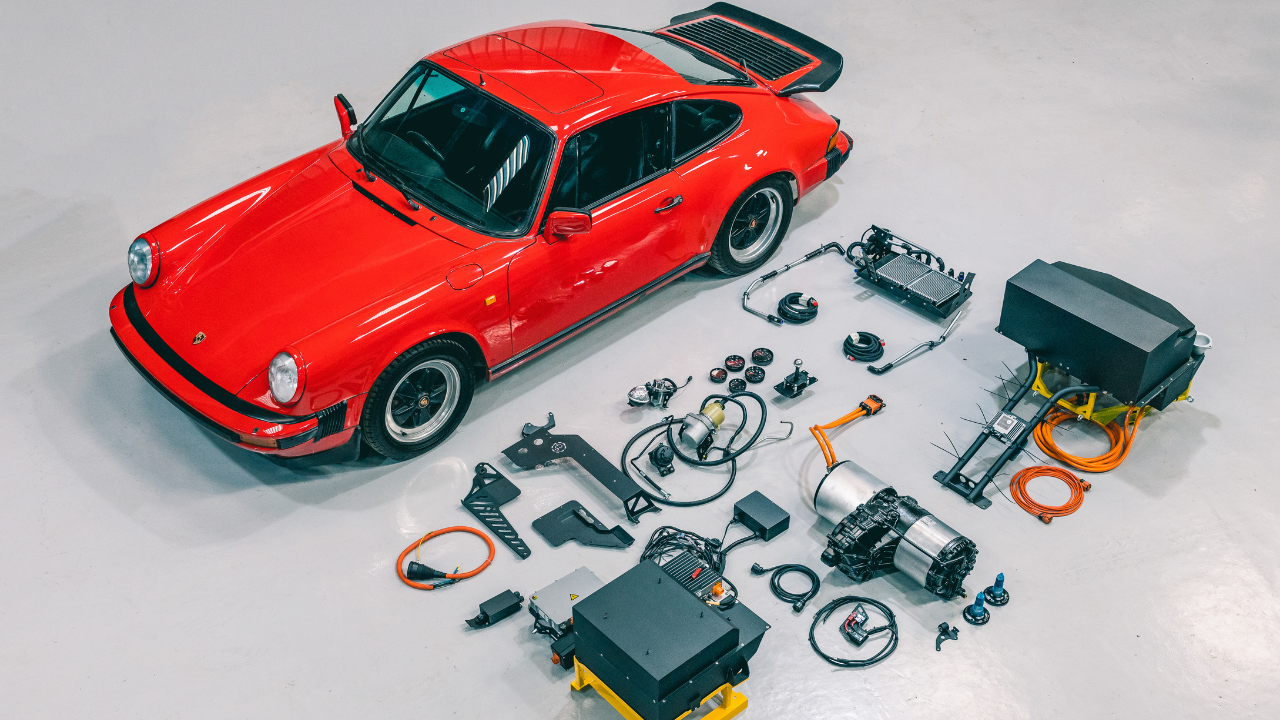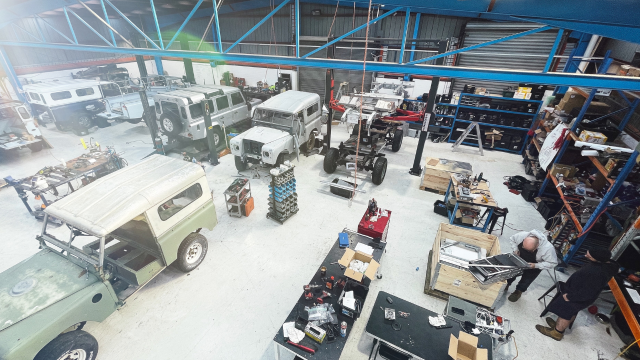At the moment, EV conversions mostly revolve around one space in the automotive industry: classic cars. Now an Australian company that has just merged with a UK company to become a global brand is betting on classic car conversion kits.
Back in February, I interviewed an electric vehicle technician that specialises in turning combustion engine cars into EVs. He told me that, for the most part, it’s a space that’s hard-hit by supply shortages and trained worker shortages, and that conversions only make sense at the moment for hobbyists.
Coming back to the present, Melbourne-based Jaunt Motors is merging with UK-based Zero EV to capitalise on this by selling EV conversion kits, so that you don’t have to purchase and configure all of the parts separately. The companies will become Fellten.
‘It’s a LEGO system, in a way’
The idea is to make conversions as easy as possible for enthusiasts. Instead of needing to source individual parts separately, classic car owners can rely on Fellten-designed parts, batteries and components, configured and tested specifically for certain popular classic car types.
“If we can simplify the electric side, from all that high-voltage wiring, which requires special tools, all the control wiring, and then all the software config, all of that, that is new, if we can provide that as a literal mechanical kit, then that can exponentially grow the ability for a normal [workshop] to do that,” said Dave Budge, CEO of Jaunt Motors and the head of design at Fellten.
“It’s a LEGO system, in a way.”

It’s an attractive idea that simplifies the conversion process. At the moment, Fellten is designing kits for classic Land Rover Defenders, Mazda MX5s, Minis and Porsches. These kits are then sold to enthusiasts and workshops, which then offer conversions as part of their services.
Here in Australia, Jaunt Motors pioneered converting classic Defenders to electric. The business model included sourcing old Defenders, refurbishing them, pulling out the unnecessary parts, sourcing the EV parts and installing them, followed by selling them to a customer that ordered the car to begin with. Now, as Jaunt Motors becomes Fellten, the business is refocusing around conversion kits.
“It goes from the idea that we struggle with,” Budge added.
“The idea of kits, which has been EV conversion kits for the past 10 years, meant a charger and a motor and the batteries — go and figure out the other 3,000 parts and all the fusing and wires yourself, versus a kit from us that is a literal bolt-in complete bench-tested running system and a dash gauge panel and improved steering and a better brake system that brings it into compliance.”
Take my Dad, for example. My Dad owns a Datsun 2000 Roadster, an old car from the ’60s and ’70s that’s seen better days. The engine hasn’t been properly maintained in decades, the brakes are shot and replacement parts would likely run into the thousands.
At this rate, my Dad’s considering converting it to electric. He doesn’t really have the time to do any of the specific tinkering himself, and he doesn’t want to buy parts from separate vendors (and have to make them all work together himself), so he’s most interested in a conversion kit like what Fellten is offering.
He’s the target market of this company, although the Datsun 2000 isn’t currently a car they design kits for (although Fellten says they’re working on more car-specific kits).
But this opens up another problem: compliance. How can enthusiasts be sure that their cars will pass registration? Budge says the hardest part isn’t actually making them compliant — it’s the bureaucracy.
The bureaucracy of EV conversions
“We have quite clear instructions about regulations and rules around modifying cars, weights and different things. You can kind of do anything, but you’ve got to make it safe and it’s got to be approved by a certified engineer,” Budge said.
“We turn up with a car to get registered; they’ve never seen an EV conversion before. Most people don’t really know that EV are even possible, or even exist. And that includes the road authorities.”
He says that, because a lot of registration authorities are unaware of EV conversions to begin with, there’s confusion on if they should be allowed to be registered. The 15-minute time that it takes for a car to be registered and assessed by VicRoads, Budge said, looks more like a day for an EV conversion owner. Not because of any special forms mind you, but because the VicRoads authorities are just unsure.
But as long as they’re safe, and as long as these cars are operating within the parameters of the law, with their parts properly bolted in, then they’re perfectly fine. There’s nothing barring EV conversions in Australia, although, you will need to have it signed off by an approved engineer.

Making new feel old
With most of Budge’s work involving the EV conversion of classic cars, I was curious as to what the hardest thing about the job is. He told me that it’s in making the car feel good to drive.
“Building a system that makes it feel like it was and always should have been part of the original car requires a bit of extra work,” Budge said.
This is why Fellten has narrowed its focus to a handful of models, so that it all feels right.
“With the older vehicles, where we might leave the original gearbox in, how do we make sure that you’ve got some of that EV feel and that instant torque but without hurting the original gearbox, and putting too much power through that,” Budge added.
“How do you make an old car feel like a new car… I guess the answer is subjective.
“We need to be making these choices on behalf of our customers.”

It all comes back to the feeling. Electric vehicles feel amazing to drive, and the instant torque is really nice, but choosing the power output and how the cars communicate with the technology that is there is really important.
After all, that’s part of why Jaunt Motors chose the Defender. A solid, popular 4×4, and one of the only electric 4x4s in the country (Budge also likened its shape to a garden shed). A lot of what made the original car so special needs to be translated through to the conversion, and Budge sees that as incredibly important.
Would you convert your car to electric?
At the moment, it’s really expensive. Budge told me that, for a Defender or classic Porsche conversions, customers would likely need to spend about $125,000 all up. Back in February, to convert your average car to electric, I was told it’d cost upwards of $60,000.
So, yes, EV conversions are still very much for hobbyists, especially classic car enthusiasts. It’s unlikely that we’ll see EV conversions gain much traction in non-enthusiast spaces while costs are so high.
That being said, it’s great to see an Australian company enjoying success.
